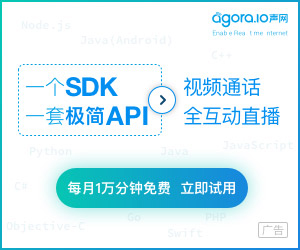Python定时任务工具之APScheduler使用方式
APScheduler (advanceded python scheduler)是一款Python开发的定时任务工具。
文档地址 apscheduler.readthedocs.io/en/latest/u…
特点:
- 不依赖于Linux系统的crontab系统定时,独立运行
- 可以 动态添加 新的定时任务,如下单后30分钟内必须支付,否则取消订单,就可以借助此工具(每下一单就要添加此订单的定时任务)
- 对添加的定时任务可以做持久保存
1 安装
pip install apscheduler
2 组成
- APScheduler 由以下四部分组成:
- triggers 触发器 指定定时任务执行的时机
- job stores 存储器 可以将定时持久存储
- executors 执行器 在定时任务该执行时,以进程或线程方式执行任务
- schedulers 调度器 常用的有BackgroundScheduler( 后台运行 )和BlockingScheduler( 阻塞式 )
3 使用方式
from apscheduler.schedulers.background import BlockingScheduler
#
创建定时任务的调度器对象
scheduler = BlockingScheduler()
# 创建执行器
executors = {
'default': ThreadPoolExecutor(20),
}
# 定义定时任务
def my_job(param1, param2): # 参数通过add_job()args传递传递过来
print(param1) # 100
print(param2) # python
# 向调度器中添加定时任务
scheduler.add_job(my_job, 'date', args=[100, 'python'], executors=executors)
# 启动定时任务调度器工作
scheduler.start()
4 调度器 Scheduler
负责管理定时任务
BlockingScheduler : 作为独立进程时使用
from apscheduler.schedulers.blocking import BlockingScheduler scheduler = BlockingScheduler() scheduler.start() # 此处程序会发生阻塞 BackgroundScheduler : 在框架程序(如Django、Flask)中使用. from apscheduler.schedulers.background import BackgroundScheduler scheduler = BackgroundScheduler() scheduler.start() # 此处程序不会发生阻塞
- AsyncIOScheduler : 当你的程序使用了asyncio的时候使用。
- GeventScheduler : 当你的程序使用了gevent的时候使用。
- TornadoScheduler : 当你的程序基于Tornado的时候使用。
- TwistedScheduler : 当你的程序使用了Twisted的时候使用
- QtScheduler : 如果你的应用是一个Qt应用的时候可以使用。
4 执行器 executors
在定时任务该执行时,以进程或线程方式执行任务
ThreadPoolExecutor from apscheduler.executors.pool import ThreadPoolExecutor ThreadPoolExecutor(max_workers)
使用方法
from apscheduler.executors.pool import ThreadPoolExecutor
executors = {
'default': ThreadPoolExecutor(20) # 最多20个线程同时执行
}
scheduler = BackgroundScheduler(executors=executors)
ProcessPoolExecutor
from apscheduler.executors.pool import ProcessPoolExecutor
ProcessPoolExecutor(max_workers)
使用方法
from apscheduler.executors.pool import ProcessPoolExecutor
executors = {
'default': ProcessPoolExecutor(5) # 最多5个进程同时执行
}
scheduler = BackgroundScheduler(executors=executors)
5 触发器 Trigger
指定定时任务执行的时机。
1) date 在特定的时间日期执行
from datetime import date # 在2019年11月6日00:00:00执行 sched.add_job(my_job, 'date', run_date=date(2019, 11, 6)) # 在2019年11月6日16:30:05 sched.add_job(my_job, 'date', run_date=datetime(2009, 11, 6, 16, 30, 5)) sched.add_job(my_job, 'date', run_date='2009-11-06 16:30:05') # 立即执行 sched.add_job(my_job, 'date') sched.start()
2) interval 经过指定的时间间隔执行
weeks (int) ?C number of weeks to wait days (int) ?C number of days to wait hours (int) ?C number of hours to wait minutes (int) ?C number of minutes to wait seconds (int) ?C number of seconds to wait start_date (datetime|str) ?C starting point for the interval calculation end_date (datetime|str) ?C latest possible date/time to trigger on timezone (datetime.tzinfo|str) ?C time zone to use for the date/time calculations from datetime import datetime # 每两小时执行一次 sched.add_job(job_function, 'interval', hours=2) # 在2012年10月10日09:30:00 到2014年6月15日11:00:00的时间内,每两小时执行一次 sched.add_job(job_function, 'interval', hours=2, start_date='2012-10-10 09:30:00', end_date='2014-06-15 11:00:00')
3) cron 按指定的周期执行
year (int|str) ?C 4-digit year month (int|str) ?C month (1-12) day (int|str) ?C day of the (1-31) week (int|str) ?C ISO week (1-53) day_of_week (int|str) ?C number or name of weekday (0-6 or mon,tue,wed,thu,fri,sat,sun) hour (int|str) ?C hour (0-23) minute (int|str) ?C minute (0-59) second (int|str) ?C second (0-59) start_date (datetime|str) ?C earliest possible date/time to trigger on (inclusive) end_date (datetime|str) ?C latest possible date/time to trigger on (inclusive) timezone (datetime.tzinfo|str) ?C time zone to use for the date/time calculations (defaults to scheduler timezone) # 在6、7、8、11、12月的第三个周五的00:00, 01:00, 02:00和03:00 执行 sched.add_job(job_function, 'cron', month='6-8,11-12', day='3rd fri', hour='0-3') # 在2014年5月30日前的周一到周五的5:30执行 sched.add_job(job_function, 'cron', day_of_week='mon-fri', hour=5, minute=30, end_date='2014-05-30')
6.任务存储
MemoryJobStore 默认内存存储 MongoDBJobStore 任务保存到MongoDB from apscheduler.jobstores.mongodb import MongoDB JobStoreMongoDBJobStore()复制代码 RedisJobStore 任务保存到redis from apscheduler.jobstores.redis import RedisJobStore RedisJobStore()
7 配置方法
方法1
from apscheduler.schedulers.background import BackgroundScheduler
from apscheduler.executors.pool import ThreadPoolExecutor
executors = {
'default': ThreadPoolExecutor(20),
}
conf = { # redis配置
"host":127.0.0.1,
"port":6379,
"db":15, # 连接15号数据库
"max_connections":10 # redis最大支持300个连接数
}
scheduler = BackgroundScheduler(executors=executors)
scheduler.add_jobstore(jobstore='redis', **conf) # 添加任务持久化存储方式,如果未安装redis可省略此步骤
方法2
from pytz import utc
from apscheduler.schedulers.background import BackgroundScheduler
from apscheduler.jobstores.sqlalchemy import SQLAlchemyJobStore
from apscheduler.executors.pool import ProcessPoolExecutor
executors = {
'default': {'type': 'threadpool', 'max_workers': 20},
'processpool': ProcessPoolExecutor(max_workers=5)
}
scheduler = BackgroundScheduler()
# .. 此处可以编写其他代码
# 使用configure方法进行配置
scheduler.configure(executors=executors)
8 启动
scheduler.start()
对于BlockingScheduler ,程序会阻塞在这,防止退出,作为独立进程时使用。(可以用来生成静态页面)
对于BackgroundScheduler,可以在应用程序中使用。不再以单独的进程使用。(如30分钟内取消订单)
9 扩展
任务管理
方式1
job = scheduler.add_job(myfunc, 'interval', minutes=2) # 添加任务 job.remove() # 删除任务 job.pause() # 暂定任务 job.resume() # 恢复任务
方式2
scheduler.add_job(myfunc, 'interval', minutes=2, id='my_job_id') # 添加任务
scheduler.remove_job('my_job_id') # 删除任务
scheduler.pause_job('my_job_id') # 暂定任务
scheduler.resume_job('my_job_id') # 恢复任务
调整任务调度周期
job.modify(max_instances=6, name='Alternate name')
scheduler.reschedule_job('my_job_id', trigger='cron', minute='*/5')复制代码
停止APScheduler运行
scheduler.shutdown()
10 综合使用
这里提供30分钟取消订单支付的思路,可以使用Flask或者Django程序都能实现,这里是在django应用中动态的添加一个定时任务,调度器需要使用BackgroundScheduler。下面先定义执行订单取消的任务。
from apscheduler.executors.pool import ThreadPoolExecutor from datetime import datetime, timedelta from apscheduler.schedulers.blocking import BackgroundScheduler from goods.models import SKU from orders.models import OrderGoods def cancel_order_job(order_id, sku_id, stock, sales): # 将订单商品和订单信息筛选出来 order_goods = OrderGoods.objects.filter( order_id=order_id, sku_id=sku_id) order_goods.delete() # 删除订单 try: sku = SKU.objects.get(id=sku_id) sku.stock += stock # 订单删掉后商品表里的库存恢复 sku.sales -= sales # 商品表里销量还原 sku.save() except Exception as e: print(e)
具体操作哪些表要根据自身表的设计来定,大致是上面的思路。然后在生成订单的视图中同时生成取消订单的任务。然后将取消订单cancel_order_job()需要的参数传递过去,注意要判定当前订单的状态为未支付状态。
from datetime import datetime, timedelta
class OrderCommitView(View):
def post(self, request):
# ... 此处省略生成订单相关逻辑
if status == OrderInfo.STATUS.UNPADED: # 待支付状态
executors = {
'default': ThreadPoolExecutor(10)
}
now = datetime.now()
delay = now + timedelta(minutes=30) # 从当前下订单延时30分钟后
scheduler = BackgroundScheduler(executors=executors)
# 添加定时任务
scheduler.add_job(cancel_order_job, 'date', run_date=delay,
args=[order_id, sku.id, sku.stock, sku.sales])
scheduler.start()
# ....省略其他业务及返回
注意: 如果需要周期性的执行一个定时任务,如果用到了django中模型类或者Flask的配置信息等相关信息,需要将框架的配置信息导入。
总结
栏 目:Python代码
下一篇:Django+RestFramework API接口及接口文档并返回json数据操作
本文标题:Python定时任务工具之APScheduler使用方式
本文地址:http://www.codeinn.net/misctech/212702.html






